Notes for MASS Zoom Meeting Oct. 9, 2020
We zoomed again and this time I had some new technology, a new webcam that enabled me to host the meeting from my desktop rather than my overwhelmed laptop. Dean, Harry( by phone), Hank, and surprise participant, Keith, joined me in the discussion. We kept the meeting to 2 1/4 hours but covered a vast majority of the topics.
We started with general discussion of what everyone was up to. I proudly announced that I was tutoring my grandson, Andy, for the past two weeks. He is a junior in high school and taking a pre-calculus class. It has been very rewarding. I admit that sometimes I’m only a couple of hours ahead of him in understanding the subject. Our zoom meetings have really helped by comfort level in zoom and I’m getting really good in sharing the “whiteboard and Internet graphing calculator. Hank is coming off a procedure that separated him from a couple of kidney stones and Keith had family plans changed by some COVID-19 issues in Kentucky. Dean got a great deal on several “Great Courses” classes in astrophysics, quantum mechanics and cosmology. I can’t wait until we can take a look at the material contained in the DVDs. Harry was on his phone on his way home from the airport, so our interaction was limited.
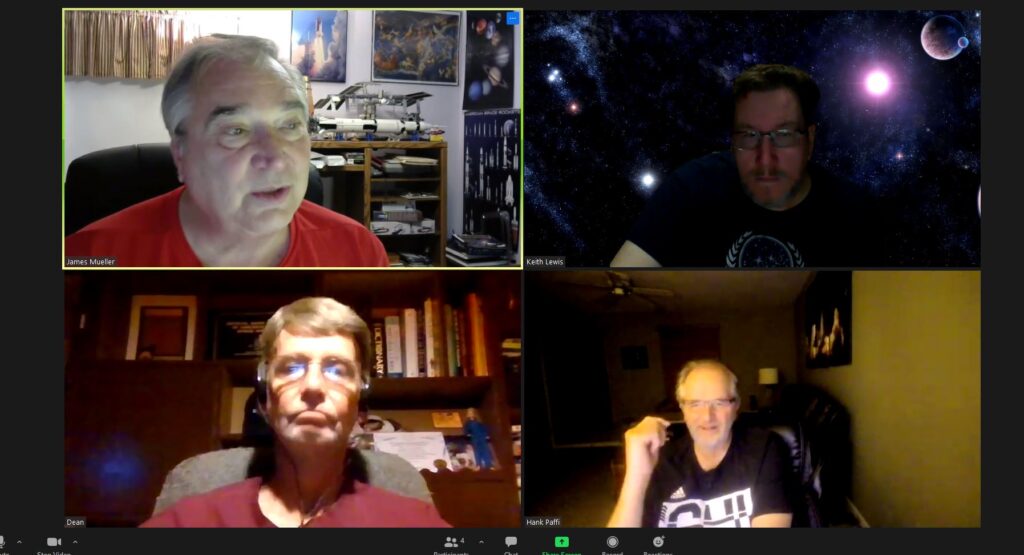
This was our 68th meeting. I shared that Oct 4th was the 63rd anniversary of Sputnik 1 in 1957. I still remember my parents showing me a bright object moving across the Milwaukee, Wisconsin skies. I’m not sure if it was actually Sputnik 1 or the rocket body from the launch but it sure impressed my 8 year old eyes.
I then commented that the past few weeks should be labeled “Scrubtober”. I can’t remember when so many launches were halted with just seconds to T-0. On Thursday, Oct. 1st, there were 3 scrubs on one day, a Starlink launch from SpaceX, a Cygnus launch from Virginia and the NROL-44 Delta 4 Heavy from Florida. At least on Oct. 3, Northrop Grumman launched NG-14 Cygnus from Wallops Island in Virginia with 7426 lbs of hardware and supplies for the ISS. Equipment included a new $23 million 3D printed titanium toilet for testing on the ISS and future use on Artemis missions. The toilet is described as more female friendly, 65% smaller and 40% lighter than the one is use on the American side of the ISS. It goes by the moniker UWMS or Universal Waste Management System. Other supplies include radish seeds and an Estee Lauder cream. Apparently the astronauts will film the cream’s application while in the 360 degree window Cupula on the ISS. I can see it now, US astronaut uniforms will look like NASCAR drivers with all the corporate logo decals on them.
We discussed the new series, “Away” on Netflix starring Hilary Swank as the US commander of a Mars mission that includes astronauts from China, Russia, India and England. There is definitely is a lot of friction between the characters and the MASS people thought the space agencies would have picked more compatible astronauts.
I commented that my initial enthusiasm for the you-tuber “Angry Astronaut” has waned a bit. He has some great content in his videos but his constant dislike of SLS and Boeing is wearing a bit thin. His current mantra is professing how he will blow up a “Starliner capsule” mug he bought at Kennedy Space Center as soon as he gets to 40,000 YouTube subscribers.
I finished reading the book, “At the Edge of Time” by Dan Hooper of Fermi Lab. Dr. Hooper is a local guy and Dean enlisted him to give a talk at Triton College a couple of years ago. The book was interesting and had a lot of insight into dark matter and dark energy. He also proposes to use the far side of the moon to study 21 cm radiation from hydrogen clouds in the universe and to use LISA, a proposed space based gravity wave detector to study mergers of super-massive black holes. The current LIGO detector cannot see these mergers because of their low frequency.
I also listened to a webinar from Jim Plaxco and the National Space Society on Oct. 8 titled, “SpaceX, Blue Origin and Space Tourism”. The consensus was that 2021 will see the start of sub-orbital tourists being launched from both Virgin Galactic and Blue Origin, and SpaceX will also launch 2 “tourists” to the ISS on the Dragon capsule. With Commercial Crew sending the US astronauts to ISS, the Russians will probably start flying a “tourist” in the 3rd seat of the Soyuz capsule. It looks like 2021 will be a banner year for getting people into space. I also learned that some companies might be flying people to great heights using balloons. These people will experience the black sky above and the curvature of the earth for a couple of hours and if the plans to cut the gondola loose from the balloon holds true, they will get a couple minutes of weightlessness too. The balloon price of $75,000 is more reasonable than the $250,000 that Virgin Galactic is charging for their quick sub-orbital flight and a steal compared to the $30 million plus that the ISS visitors will probably pay.
Beth is scheduled to be a moderator at SpaceCom 2020 that runs from Oct 19 to 29. The free conference is virtual and has an impressive list of speakers. I plan to listen to as many presentations as possible.
Upcoming events include the Oct 20 Osiris-Rex tag event (see the rehearsal video) to sample the asteroid Bennu and bring the sample back to Earth. Also the “Green Run” test of the SLS core stage at the Stennis Center is scheduled for early November. As of Oct. 8, NASA announced that they had finished test 6 of the 8 tests. Now all they have to do is fill the rocket with 700,000 gallons of cryogenic propellants (Test 7) and fire the 4 RS-25 engines, previously used on the Space Shuttle, for 8 minutes while they hold the rocket down (Test 8). It should be an impressive final step.

We then got into our main topic the discussion of the discovery of phosphene gas in the atmosphere of Venus. But first, we discussed the history of Venusian missions. Wikipedia says there have been 43 missions but 5 of those were just gravity assists to send the probes to other destinations. If you include just the 38 dedicated missions, Russia has had 29 with 11 successes, 14 failures and 4 partial successes, the US has had 7 missions with 6 successes and 1 failure, Europe and Japan each have had 1 success. Only Russia has successfully landed on Venus and they have done it 9 times. The surface of Venus is almost 900 degrees F and has a pressure 92 times that at Earth’s surface. That is a tough environment for electronics and any normal spacecraft material. The last dedicated mission to Venus was Akatsuki which missed its original orbital insertion in December 2010 but the Japanese persevered and successfully got the probe out of its orbit around the Sun and into an orbit around Venus in December 2015. Akatsuki is currently the only active mission around Venus. The last Venus mission from Europe was Venus Express in April 2006 and the last US mission was in October 1990 with the Magellan orbiter. The last Russian mission was way back in 1984.
NASA is currently evaluating 4 missions for its Discovery program. Discovery missions have a cap of $450 million, not including the cost of launch. Of the four, two are missions to Venus. VERITAS is an orbiter with a cloud penetrating radar and DAVINCI+ is another orbiter with an atmospheric probe. Both missions would launch in 2026. There also is a very interesting manned mission called HAVOC which would have astronauts piloting a dirigible in Venus’s atmosphere. This mission is not currently funded or even on any selection list. TMRO has a great video summarizing the past missions to Venus.
Surprisingly it is slightly easier and much quicker to get to Venus rather than Mars. It takes slightly less energy to reach Venus compared to Mars and the travel time is only 3 months compared to the 7 months for Mars.
The company Rocket Lab may even reach Venus before the big space powers. Peter Beck, the CEO, has stated that he would like to send a private mission there in 2023. Rocket Lab has successfully fired its Electron rocket 13 times and can place 660 lbs (300 kg) into LEO. This is a small fraction of the 34,400 lbs (15,600 kg) that a reusable Falcon 9 can place in orbit but their cost is only $5.7 million or one tenth the $57 million cost of a reusable Falcon 9. All of Rocket Lab’s launches have been from New Zealand but they will soon be launching from Wallops Island in Virginia. Currently the Electron rocket is not reusable but starting later in 2020, they intend to catch their first stage as it descends on a parachute with a helicopter. This reuse will drive down their costs even further. Back to their Venus mission, Rocket Lab will use their Photon satellite bus as a third stage of their rocket. With the Photon they will be able to send an 82 lb (37 kg) probe with about 6.6 lb (3 kg) devoted to a science payload. Total cost is estimated to be $10-20 million. It would be pretty cool if Rocket Lab is the first to confirm the evidence of phosphine in Venus’s atmosphere.
The discovery of phosphine in Venus’s atmosphere was our main topic. This 5 minute video from the Royal Astronomical Society does a good job describing the effort and impact. The discovery was made 3 years ago with spectroscopic studies from the ground. Phosphine (PH3) is made by bacteria in oxygen-free environments (like sewage plants) and could be coming from a habitable zone in Venus’s atmosphere. About 50 km above the surface of Venus, which is 10 times higher than the clouds around Earth, the temperature is about room temperature and the pressure is the same as on the Earth’s surface. The discovery needs confirmation by another group to insure that no errors were made. Phosphine is a flammable and a poisonous gas to humans. There is no known way for it to be made geologically on Venus. That is why this discovery is a better signal than the seasonal variation of methane on Mars which could be made geologically. Only the detection of hydrocarbons in the plumes of Enceladus, a moon of Saturn, is a better signal of potential life. The gas wouldn’t last more than 1000 years in the atmosphere so it must be currently created. The concentration is 20 parts per billion which is 1000 times more than the concentration in Earth’s atmosphere. There still could be some creation process in volcanoes that we currently don’t understand. Scientists even don’t exactly know how bacteria here makes it. Sulfuric acid in Venus’s atmosphere will still be a problem for life to exist.
On October 15, 2020 the BepiColobo probe from Europe, on the way to Mercury, will pass 10,000 km from Venus and might search for the gas but the science team has said they haven’t had enough time to adjust their observations. The probe will make another pass on August 10, 2021 that will be only 550 km away and have a better chance of confirming the detection.
Mars has shown that it is a little upset with all the speculation about life on Venus by responding with the discovery of underground liquid water lakes under the south polar cap. Ground penetrating radar returns from Europe’s Mars Express Orbiter indicates a large salty lake 30 km wide surround by several smaller 1 km ones in size. Scientists used images from underground lakes in Greenland to help interpret the Mars images. On Earth, underground lakes up to 5 times the ocean’s saltiness have harbored life, but on Mars the lakes must be 20 times the saltiness to stay liquid in the -190 degree F temperatures. The lakes will be hard to reach because they are 4000 ft below the surface under alternating layers of ice and dust.
Another Mars story is the status of the “mole” on the Insight lander. Here is a short video showing the robotic arm pushing on the dirt above the fully buried mole on Sol 645 (~9/20/20 Earth time). The 16 inch long mole is at a 30 degree angle under the surface. This makes the bottom tip of the mole 14 inches down and a few inches of dirt would make it about 17 inches deep. You can see the flat ribbon cable coming out of the ground just to the side of the robotic arm. The signals from the mole’s temperature sensors flow through this cable back to the Insight lander computers. Scientists hope to get the mole much deeper (about 16 ft) so that they can measure the temperature gradient in the Mars soil.
Our next set of topics concerned NASA, first was the story that the SLS rocket will cost 33% more than the last estimate. This was the announcement on August 29, 2020. The new development cost is $9.1 billion and the ground systems to support it will cost another $2.4 billion. That is a 33% increase since 2017 and represents only direct development costs. NASA has received more than $20 billion from Congress since 2011 for SLS development and related activities. The first unmanned launch of SLS called Artemis 1 is scheduled to launch in November of 2021. Charles Bolden, a former head of NASA under President Obama, has recently stated that he thinks SLS will go away in 4 years or less because commercial launchers are cheaper.
Bill Gerstenmaier, NASA former head of manned space flight, warns of prematurely ending the ISS. ISS is coming up on its 20th year of continuous occupation on November 2, 2020. According to my count, there have been 63 long-duration crews and a total of 422 visitors that came on 98 manned craft dockings. There also have been 127 unmanned cargo supply dockings. Bill thinks commercial ventures like cargo, crew and a host of other private activities, need more time to mature. NASA is considering stopping ISS funding after 2024. But the hardware comprising ISS is capable of operating until 2028. The pressure to stop ISS support dollars if coming from a desire to reallocate money for exploration under the Artemis program. Gerstenmaier is now a SpaceX consultant. The US has bought another seat on the Soyuz from the Russians for a little over $90 million but that is still cheaper than the price Boeing is going to charge NASA for Starliner seats. SpaceX seats on Crew Dragon are about $55 million.
Our conversation continued about the Artemis program. Artemis 1 is scheduled to occur in November 2021 when an unmanned Orion capsule circles the moon on a 26-42 day mission. The Artemis 2 mission will be a manned mission that will perform another loop around the moon. Artemis 3 will be a manned mission that lands at the south pole of the moon, possibly by the end of 2024. The spacecraft that brings astronauts down to the moon’s surface is called The Human Landing System, HLS. NASA says they need $3.2 billion in fiscal year 2021 to keep development on schedule, but Congress has only provided $628 million in their proposal. HLS is currently having 3 candidates mature their designs, SpaceX with a lunar optimized StarShip, Blue Origin with their Blue Moon lander and Dynetics with their ALPACA lander. By Spring of 2021 NASA intends to down-select to one or maybe two of the landers. NASA has also said that the entire Artemis program will cost $28 billion over the next 5 years. This includes SLS, Orion, and HLS. The YouTuber “Everyday Astronaut” has a great video comparing the Apollo program to Artemis
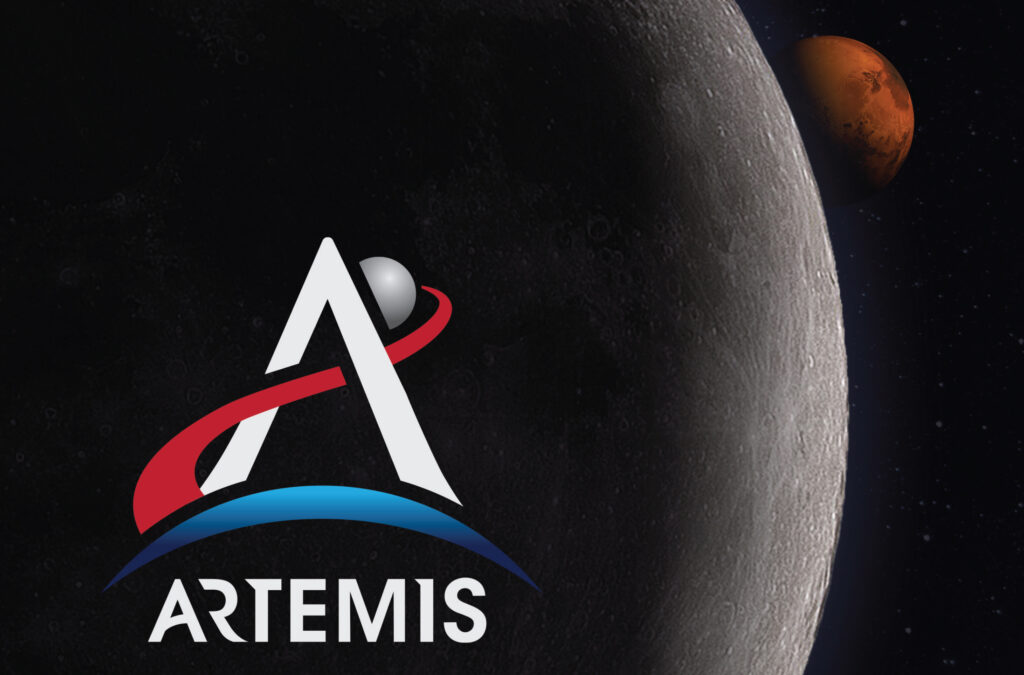
A fully integrated James Webb Space Telescope (JWST) has completed its final tests. Previously individual components of JWST had been tested. It will now move to its last full extension of its primary mirror and sunshield to evaluate how the telescoped fared after its vibrational, heat and acoustic tests. Then it will be packed up in a specialized shipping container for transport to South American for launch on an Ariane 5 rocket. Deploying the observatory after experiencing a simulated launch environment is the best way to replicate the true series of events the observatory will experience in space. Launch is scheduled for Halloween next year, October 31, 2021 from French Guiana. Trick or treat?
Our last NASA topic was the Commercial Lunar Payload Services (CLPS, pronounced clips). CLPS, which was established in April 2018, now has 4 launch contracts to place payloads on the moon. And these missions are coming soon. First we have Astrobotic who will carry 11 payloads in 2021 to Lacus Mortis, a large crater on the near side of the Moon, using their Peregrine lander and launching on a Vulcan rocket. Next is Intuitive Machines sending 5 payloads in 2021 to Oceanus Procellarum, a scientifically intriguing dark mare on the Moon, using their Nova-C lander and launching on a Falcon 9 rocket. Third is Masten Space Systems sending 8 payloads in 2022 to the south pole of the moon using their XL-1 lander and launching on a Falcon 9 rocket. Lastly we have Astrobotic again landing the VIPER rover with their Griffin lander in 2023 at the south pole. Its enough to make your head spin with all these different companies and their landers. Many of the companies have their roots in the Lunar X Prize competition.
The next set of topics were astronomy based. We started with the impact SpaceX’s Starlink satellite constellation will have on observations from Earth. I initially thought astronomers were acting like Chicken Little with their complaints, but now I realize that the 12,000-42,000 Starlink satellites will cause serious problems. And Starlink won’t be the only constellation. Amazon wants to put up its Kuiper system of 3200+ satellites and OneWeb in Europe, although bankrupt, has been bought out by England and has petitioned the FCC to increase its constellation to up to 48,000 satellites. One good thing is that SpaceX at least, has had conversations with astronomers on what could be done to minimize the impact. They have tried painting some components black, which caused thermal problems for the satellites and put sun shades on a few satellites to make them dimmer. These mitigation programs have made some of the satellites too dim to be seen with unaided human eyes, but the satellites will still be bright compared to the objects being studied by the earth-based telescopes. The Vera Rubin Telescope under construction in Chile will be able to see objects of magnitude 24 with their 15 second exposures. That is 15 million times fainter than detectable with the human eye. The telescope’s CCDs will become saturated when any satellite comes in view and the satellite trails will hinder the detection of asteroids which also make trails on the images. Large survey programs and Near-Earth asteroid detection programs that observe in the twilight will be the hardest hit. I hope that SpaceX and the other players continue their effort to minimize the impact.
So far SpaceX has launched 775 of their Starlink satellites and 47 had already been deorbited. OneWeb has launched 74. SpaceX is soon to start a public beta test of Starlink and an evaluation by internal users and some of the Oregon fire fighters has been positive. Users saw download speeds of 11-60 Mbps, upload speed of 5-18 Mbps and latencies of 20-94 ms. I know I’d be happy with anything that was cheaper and more reliable than my current 25 Mbps from AT&T. which costs about $55/month.
Since we mentioned the Vera Rubin Telescope (formerly the LSST or Large Synoptic Survey Telescope), I went a little into this amazing new device that should see “first light” in the third quarter of 2021. It is a 8.4 meter (28 ft or 336 in) diameter telescope and has a 3200-megapixel camera. The field of view will be the size of 40 full moons (3.5 degrees in diameter or 9.6 square degrees). Over a few days, it will image the entire sky from Chile with 15 second exposures. Resolution is so good you could see a golf ball from 15 miles away. The focal plane of the telescope will be more than 2 feet wide and contains 189 individual CCDs. The plan is to conduct a 10 year study of the cosmos that will include about 20 billion galaxies. With the ability to image the entire sky every few days, it will like having a time-lapse movie of the universe.
Scientists have just detected the first mid-sized black hole with LIGO. On May 21, 2019 researchers identified a unique set of gravitational waves. The object was 7 billion light-years away making it the most distant gravity wave signal ever detected. Result of the merger was an intermediate-mass black hole between stellar-mass (a few to 100 solar masses from collapsed stars) and supermassive ones (millions to billions of solar masses that lurk in the centers of most galaxies). The merger consisted of a 66 and a 85 solar mass object and resulted in a 142 solar mass black hole. The merger’s signal lasted only a tenth of a second which is quicker than usual. Stars above 120 solar masses never go supernova because they collapse directly into black holes. Stars in the 65 to 120 solar mass range, like either progenitor of this merger, also don’t explode as supernova. That means there shouldn’t be any black holes in that mass range. Stars this large go thru “pair instability” which helps avoid gravitational collapse and rids the star of a significant amount of its mass. When it does explode, it leaves nothing behind. Nice picture showing all the announced mergers. The site also has a short 2 minute video of this merger. From scientists understanding of how stars age and evolve, they expect to find black holes either less than 65 solar masses or more than 120 solar masses but none in between. LIGO-Virgo has now identified 56 possible gravitational wave detections from its completed 3rd run. Only 4 have been confirmed and publicly announced, the other 52 are still under study.
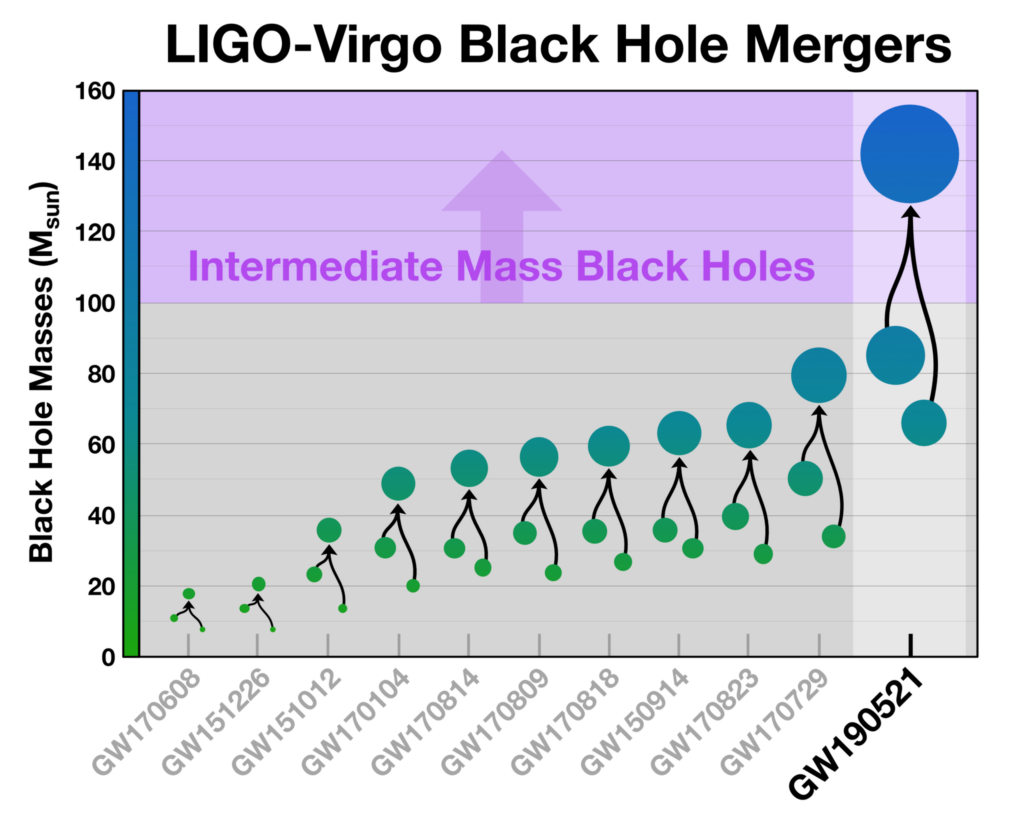
For you exoplanets followers, I found these two sites that will give you the latest counts. The first gives all the exoplanet count. As of 10/8/20 there are 4292 confirmed exoplanets with the new TESS spacecraft discovering 79 of them and generating 2330 candidates that need further research. There are plenty of ways to slice and dice the data to examine the different categories of exoplanets. The second site just deals with habitable exoplanets. The habitable exoplanet count is 60.
Moving on to SpaceX news, the next launch of crew on Dragon was scheduled for the popular date of Halloween this year, 10/31/20. But since the meeting, the launch of CREW1 with 4 astronauts has been delayed to the range of November 1st to the 21st. SpaceX and NASA noticed that the gas generators in one of the scrubbed Falcon 9 launches was showing high pressures. They want to evaluate why this dangerous situation was occurring. Hopefully the problem will be resolved quickly. Russia should be launching a new crew of 3 to the ISS on October 14. The crew consists of Kate Rubins from the US and two Sergey’s from Russia. The current crew on the ISS will land on Oct 21, 2020. I’m anxious for new Dragon crew to arrive, the amount of science that 5 US launched astronauts can accomplish will be amazing. CREW1 should spend 6 months aboard ISS. The ISS will be celebrating 20 years of continuous habitation on November 2nd. It doesn’t look like CREW1 will be able to take part in it, but they’ll be there soon. They have named their Dragon capsule, Resilience, and the Dragon has had a few modifications. The heat shield has been “beefed” up a little and the instrument to measure capsule altitude has been modified. The DM2 capsule saw more ablation of the heat shield in certain locations and the drogue chutes deployed at a slightly lower altitude than expected. Also the Coast Guard will strictly enforce a 10-mile “keep out” zone around the splash down location this time.
In Boeing news, the OFT-2 Starliner is 80% complete and the service module is 90% complete for the redo of the uncrewed launch to the ISS scheduled for December 2020. The crewed Starliner with 3 astronauts will occur no earlier than June 2021. Big news recently is that Chris Ferguson has stepped down as the commander of that mission citing family reasons, (I think his daughter is getting married) and been replaced with Barry “Butch” Wilmore. Let’s hope Boeing can perform a successful unmanned mission. They were initially cited with 61 recommendations from their first attempt in December 20, 2019. Of those recommendations, 27 were classified as “mandatory”, 13 “highly recommended” and 21 “lower priority”. Later another 19 recommendations were made with 15 “mandatory” and 1 “highly recommended. Issues involved bad clock synchronization, communication troubles and depletion of thruster fuel. All contributed to the inability to dock to the ISS and the almost catastrophic impact of the service module with Starliner on the return from orbit.
In the other SpaceX story, the progress of StarShip down in Boca Chica, Texas is amazing. And it all happens under the watchful eyes of video paparatzzi. SpaceX is up to SN8 in prototypes and this one should fly to 15 km on 3 Raptor engines and try to perform a suicide dive before landing on its tail. SN5 and SN6 both performed 150 meter hops with 1 Raptor engine. The craft are amazing in size and when you realize that they will be stacked on top of a Super Heavy first stage of even more height and 28 Raptor engines that is when you realize how enormous it will be. Starship will be the first totally reusable rocket and capable of putting 100 metric tons into LEO. SpaceX will be capable of launching 400 Starlink satellites on one Starship launch. With orbital refueling, Starship will be able to take that 100 mt to the moon or Mars. The Super Heavy first stage will have 16 million pounds of thrust (Space Shuttle had 6.7 million lbs), and be 120 meter high. Starship and Super Heavy will weight 30% more than the Saturn V but will have twice the thrust. The New Glenn rocket from Blue Origin will be able to lift 45 mt to LEO. A Starship update should be coming from Elon Musk in October 2020.
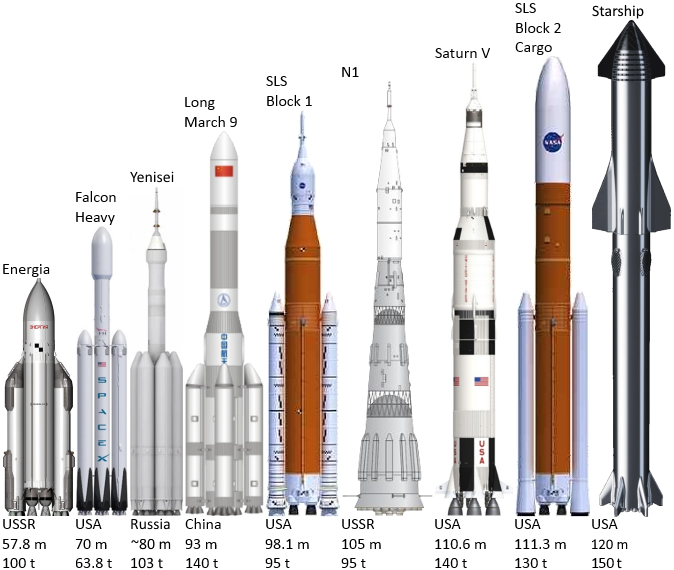
In international space news, China launched and landed a reusable spacecraft on September 6, 2020. No pictures are available but the craft is presumed to be like the XB-70 craft that ULA launches for our Defense Department. The Chinese craft landed after 2 days in space. In wonder who’s plans they stole this time, it must either be Boeing’s or Sierra Nevada’s.
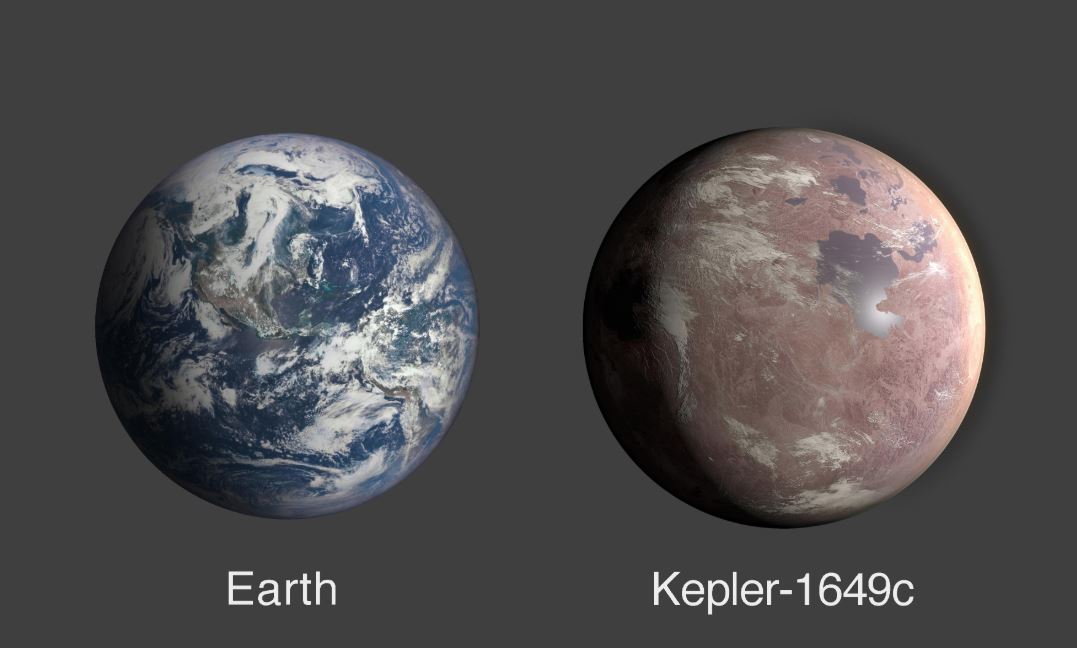
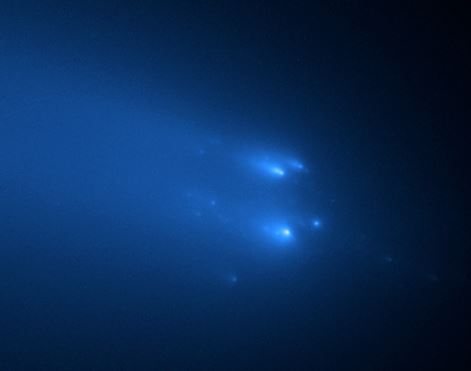
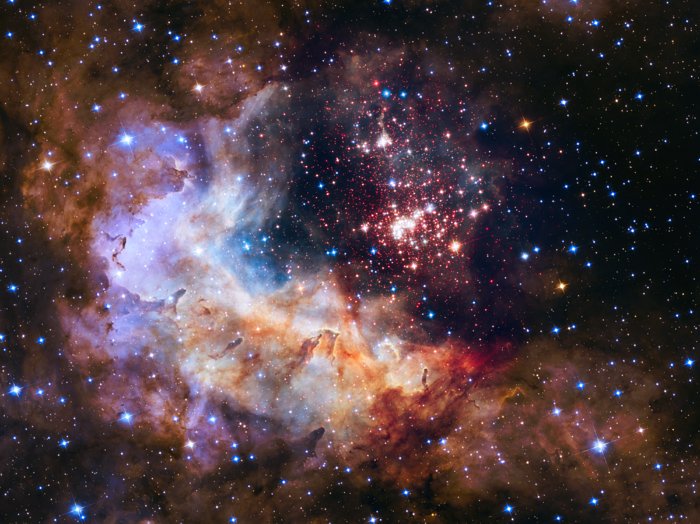
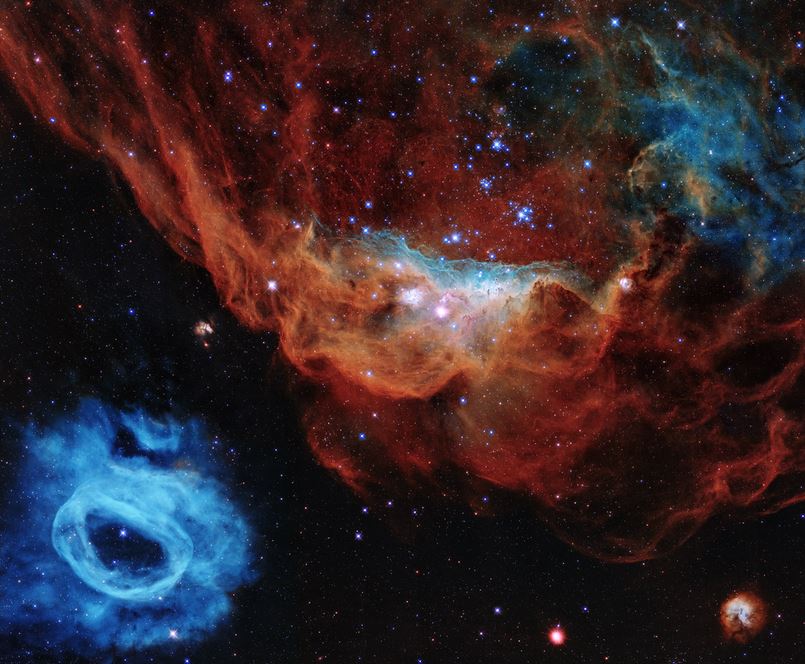
Recent Comments